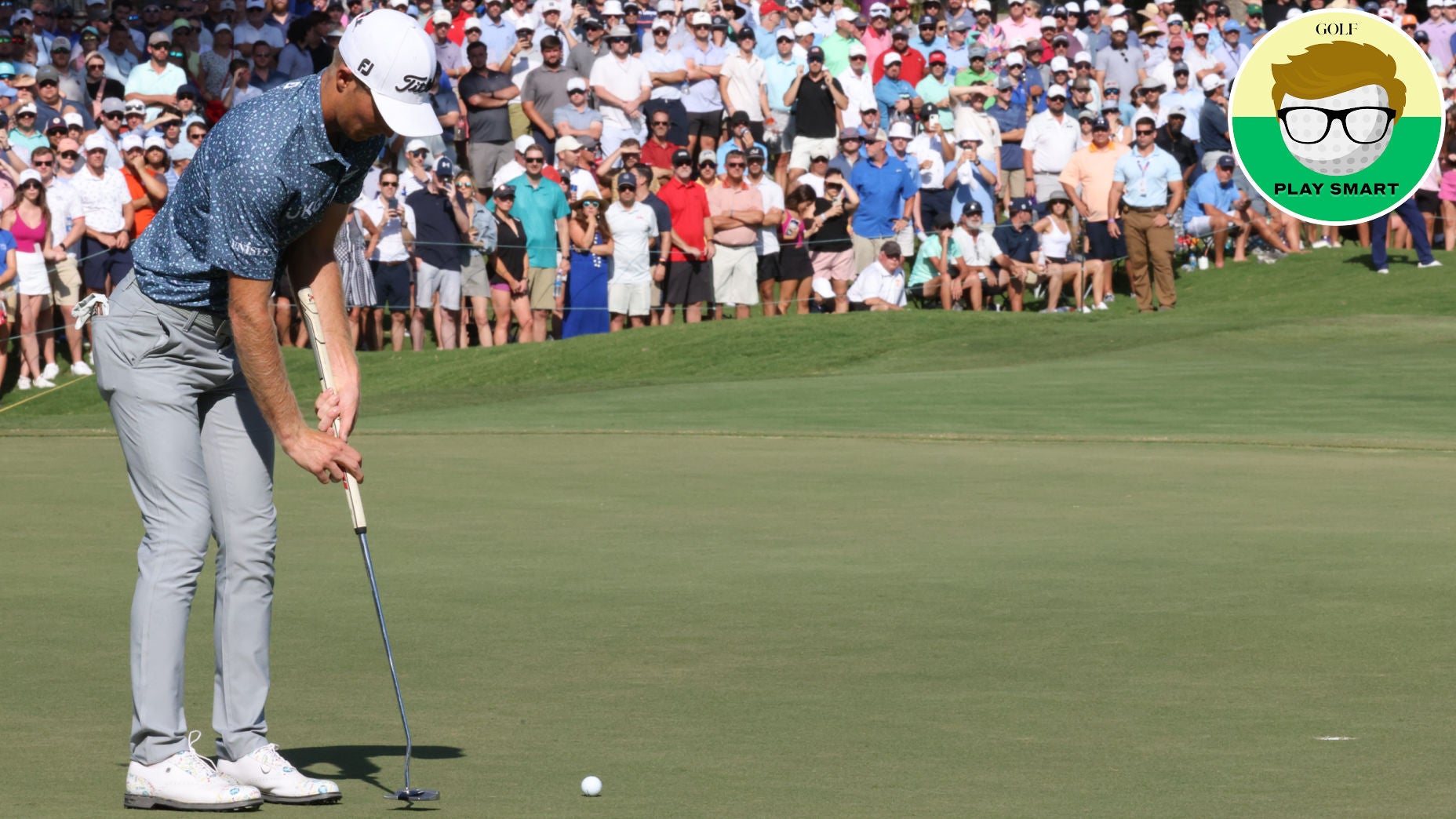Welcome to Play Smart, a game improvement column and podcast from editor Luke Kerr-Dineen to help you play smarter, better golf.
Watching Will Zalatoris making a clutch putt on his 72nd hole of the FedEx St. Jude Championship — and then two more in the ensuing playoff itself — I was struck by a singular thought:
How could a so-called “bad” putter on the PGA Tour, still be this good at putting?
It probably speaks to fans’ tendency to generalize and oversimplify that we landed on this conclusion about Zalatoris. Indeed, it’s true that putting isn’t the strength of Zalatoris’ game. But there are more positives there than meet the eye, and in many ways, the rest of us can learn more from watching the way Zalatoris manages his game on the green than a more instinctual player whose putting comes more naturally.
So let’s break it down.
Yes, short putts are an issue
Let’s start with the knock on Zalatoris: That he’s somewhere between sketchy and shaky from short range. While it’s worth noting that he’s currently the leader on Tour in putts made from three feet, that’s more of a statistical quirk than anything else (I’ll explain why in a second). The fact remains he ranks 187th on tour in putting between four and eight feet, making about 64 percent of his putts from that range compared with the Tour average of 69 percent. In real terms, that equates to 10 putts over the course of this season that Zalatoris missed which the average PGA Tour player from this range made. They’re thin margins, but such is life on Tour.
Zalatoris has been open about his struggles from this range, which in large part involve him getting twitchy. That moves his putterface unpredictably, which can send the ball rolling in just the wrong direction, which on short putts, is the difference between missing and making.
He’s continued with his arm lock-claw combo method, but after his win, Zalatoris said he’s been experiencing some success moving at a slightly faster pace.
“I’ve tried to get a little bit quicker. Whenever I’ve struggled, I’ve been slow.” He says “I’m a fast walker, I’m obviously a fast talker, I do everything quick. But being able to just look at the target, roll the ball to there and move on, accept what happens from there. It’s the same thing in my full swing, take a couple practice swings, I walk into it, take two looks and then go. The second my eyes come back to the ball, the club’s being pulled back.”
His speed control his elite
Short putting is important, obviously, but it’s also just a sliver of what happens on the greens. A key component of what makes Zalatoris a top-caliber player is that his weaknesses on the greens are mostly confined to short range. Indeed, from longer range, he’s elite: He’s 3rd on tour in approach putt performance, leaving his ball exactly two feet on average (which bolsters his statistical performance from inside three feet that we mentioned above). Zalatoris is also 18th in Putts per Greens in Regulation, which for a player who ranks inside the top 10 in GIR, is a huge asset.
In a nutshell, Zalatoris is really good at two-putting. He may miss the occasional short putt, but he’s rarely making unforced errors with his initial putt from longer range. It may not be as glamorous as making lots of birdie putts for the highlight reel, but his speed control is really good on the putts that golfers tend to have a lot of. It just goes to show that putting in the hard work improving the unglamorous stuff can get you a long way in this game.
He maximizes the hot streaks
On balance, Zalatoris’ game involves hitting lots of fairways, lots of greens, lagging his birdie putts close, and tapping in for lots of easy pars. He misses a few of those short ones along the way, and other times, those birdie putts go in.
Whether you’re on the PGA Tour or an avid golfer at home, your job is to accept that that’s what putting is. Once you face a putt outside of eight feet, you’re statistically more likely to miss than make. Like flipping a coin and landing on heads five times in a row, some rounds you’ll drop everything you look at, and it’ll be super fun. Other times you’ll get unlucky, and you’ll miss a ream of putts you should make.
Zalatoris may not make his living, day-in and day-out on the PGA Tour, dropping lots of putts. But in many ways that’s why he’s such a mainstay among the top ranks.
In boasting a high level of consistency from tee-to-green, Zalatoris has situated his game so he is ready to take advantage of the good putting streaks whenever they do come. It means, in essence, that he doesn’t need to make putts to play well. But because his ball-striking and distance putting are so rock-solid, he can glean more of an advantage from the hot putting days when they do arrive. That’s what happened on Sunday, and he’s got his first PGA Tour trophy to show for it.
You can subscribe to the Play Smart podcast on Apple here, or on Spotify right here.
